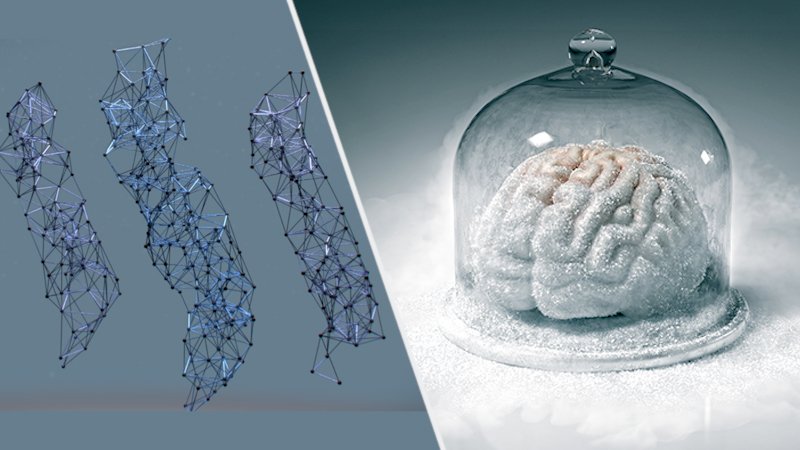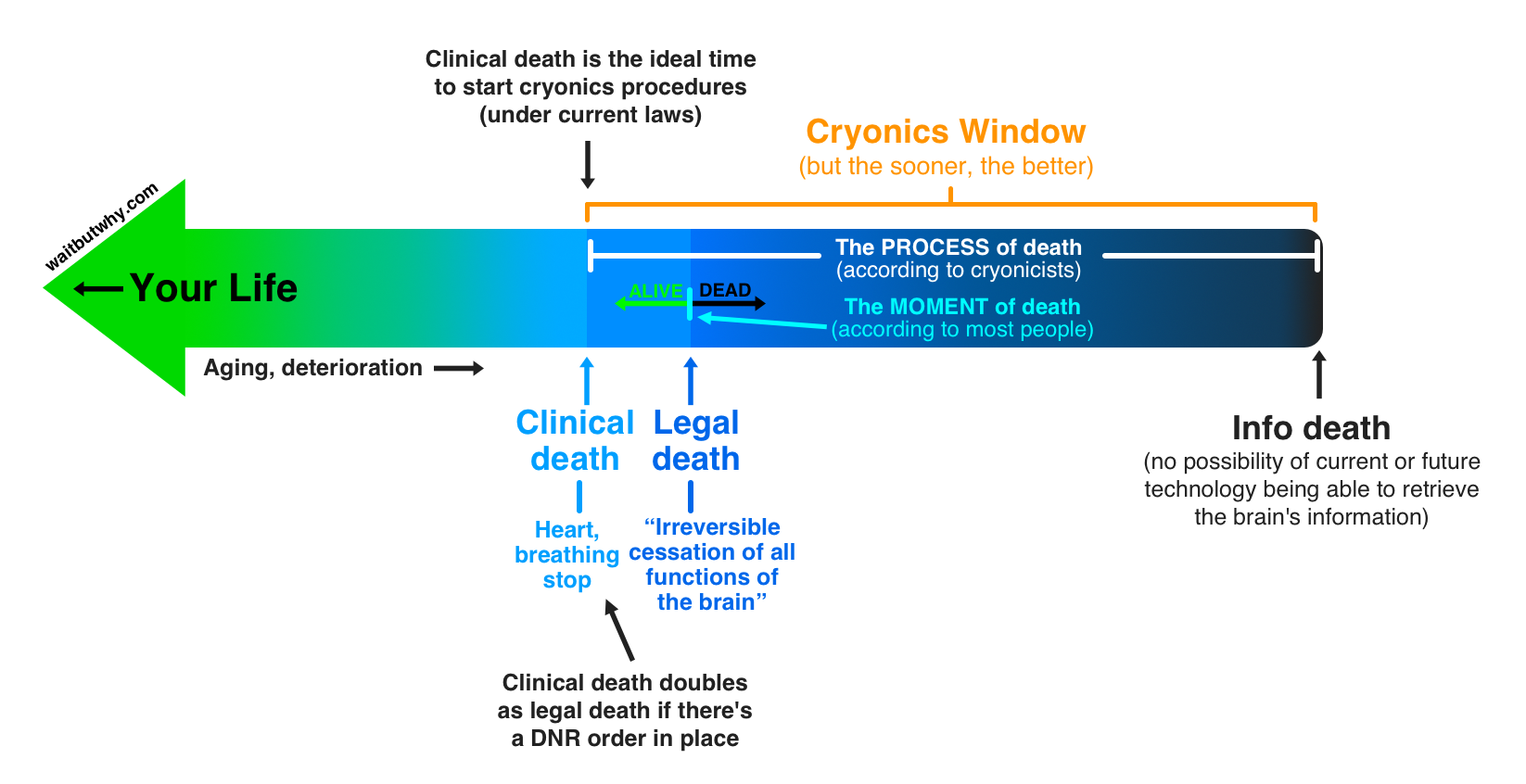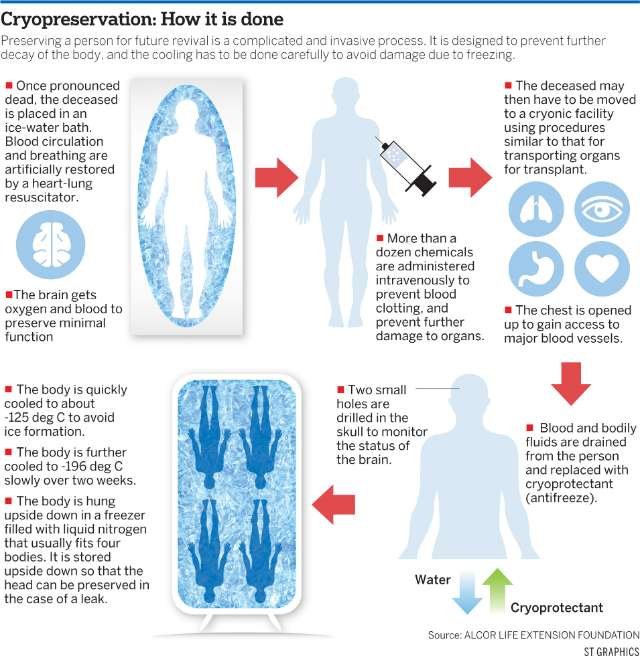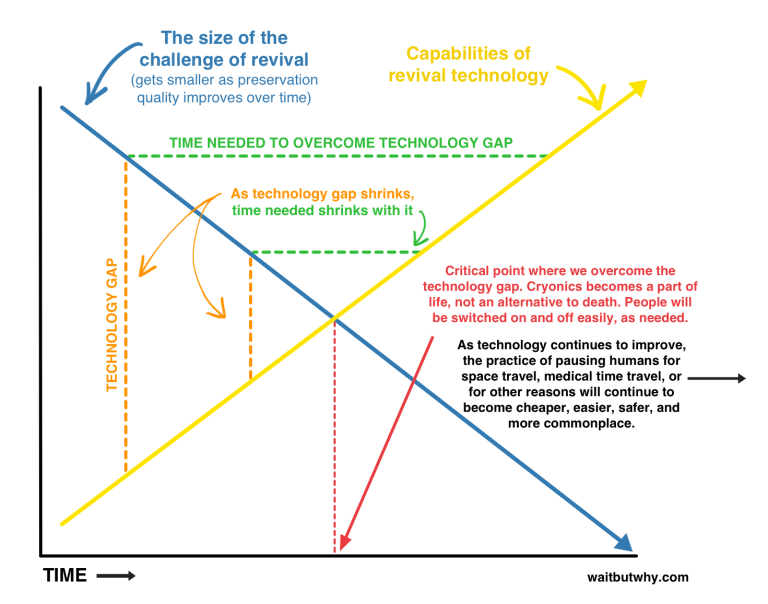
Do you know the story of Captain America? In the Marvel tales, he was frozen for several decades and came back to life later on.
Obviously that's just a fiction story, but scientists are actually doing similar things to people that have died - they freeze them, and hope to thaw and cure them again in the future when technology is much more advanced.
This is the very basic concept of Cryonics.
Cryonics History & Info
The thought of freezing someone and reviving them in the future was first published by physics professor Robert Ettinger in 1962. Since then, it has been a popular topics in many sci-fi movies, books and games - but until today, no one knows if it will actually work.
The first person to try this was James Bedford, who died of cancer in 1967 at age 73.
Since then, about 300 people from around the world havea agreed to the same procedure.
There are 4 major nonprofit organizations in the world that execute this cryonics process, and it's very expensive - depending on a lot of factors, it can vary from $50,000 to $250,000.
A few thousand people are als members of these organizations - which means that they have already signed up to be vitrified (the corrct term for 'frozen', as I will explain later on) as soon as they die.
The definition of death
It might sound pretty strange that scientists are trying to freeze dead people, and hope to revive them later.
But the definition of "death" is actually very complex.
Until mid-20th century, a person was declared when their heart and breathing stopped.
But since technology advanced so much in the last few decades, the legal definition for a death had to be changed to someone with "irreversible cessation of all functions of the brain".
But if you think about it, declaring someone as dead really means that there's no possible chance of survival under the current circumstances.
For example:
Let's say someone's heart stopped 15 minutes ago as he arrives to a primitive hospital in a small village in India.
They would be pronounced dead, because the hospital doesnt have the ability to revive someone whose heart stopped longer than 6 minutes ago.
But if the same person gets to a High-Tech hospital in New York, where they have a technology to revive someone even if the heart stopped 30 minutes ago, they're not technically dead and still have hope to be revived.
That's what cryonicists think - but instead of a different location, they think of a different time where they will be a cure for someone that's currently pronounced dead.
That's why cryonics companies view their patients as patients not corpses, and assume theyre not dead, they just need to be healed in a different time.

How does it work?
If you are a member of a cryonics organization, you wear a bracelet and necklace that informs everyone twhat should happen to your body if you suddenly die.
The ideal death for a cryonics patient would be to start the process right when the heart and the breathing has stopped - if you have a terminal illness like cancer, you can even prepare yourself to die in a special hospice.
If you die under different circumstances, for example you're found hours after death or your organs have already been damaged due to an accident, the process is less likely to be successful, but still they will do everything they can.
Then, the most important part of the cryonics process happens:
The person gets cooled down to -196°C (-320°F) with liquid nitrogen.
This is actually called vitrification - not freezing. There's a big difference.
Our body is mostly made up of water, so if you'd just freeze someone, the water in their cells would form crystals, and as soon as the person was thawed their membranes would burst, their blood vessels would be totally damaged and their cells would be dehydrated.
So the difference with vitrification is that the blood is replaced with a cocktail of chemicals - called "cryopreservants".
These are essentially like anti-freeze - they turn into a solid without any crystals.
But this method still has a lot of risks - the organs can still easily be fractured, and no one knows if and in which condition a brain could "survive" this process.

Progress
Vitrification is currently already being used to preserve embryo cells in IVF therapy - successfuly.
But obviously, preserving a small number of cells is much easier than preserving a whole body.
Experiments with a rabbit kidney were also successful - the kidney was vitrified, and later on re-attached to a rabbit. The whole process worked fine.
But then again, a human brain is much more complex than a rabbit kidney, and we don't even know how much of consciousness is left in a "dead" brain.
Vitrification has a large potential for organ donations though, because the donor's organs could be safely stored in a good condition until a perfect match was found.
Challenges
There are A LOT of "if's", skepticism, and critical questions.
We are still very far from actually reviving a real, vitrified human, and getting him back to a normal health level.
First of all, you would have to be able to thaw the person and treat the damaging effects of vitrification.
Then, you need to cure what initially killed the person.
And that would only be possible if ...
- If the person legally died in a way that didn't do too much damage to any of the organs, especially the brain
- If the cryonics company can store the patient safely, and without interruptions (What if the company goes bankrupt? Or society is facing war, or a natural disaster happens?)
- If our technology gets so advanced that it could actually bring someone back to life after vitrification, without negative effects
- If the future society actually decides that that point has come and takes explicit action to revive them
There are so many challenges tht this post would get way to long if I actually listed them all - like I said, we are still very far from actually reviving someone after vitrification, and there are near endless risks and possible scenarios to think about when researching this topic.

Personal Opinion
I personally am neither an active supporter nor a critic of cryonics - I believe that it might make sense in some cases where the person would otherwise die really young anyway. So they might as well try this way - maybe they'll be revived, or they'll never wake up, which would be essentially the same outcome as dying right away.
Images: 1, 2, 3, 4, 5, Sources: 1, 2, 3, 4
- Instagram -

© Sirwinchester

